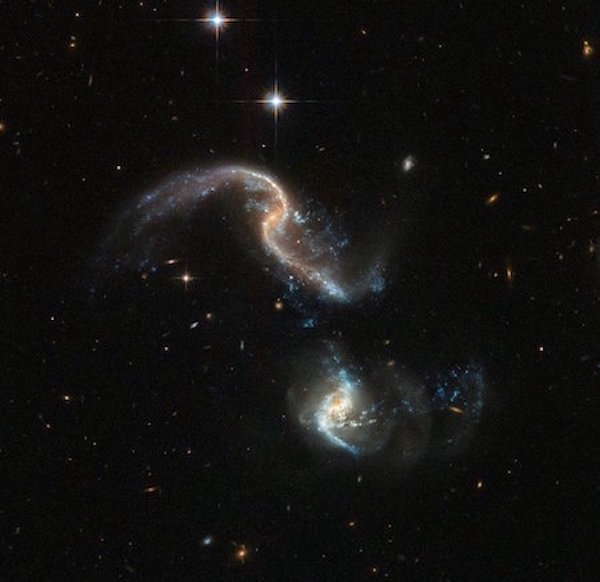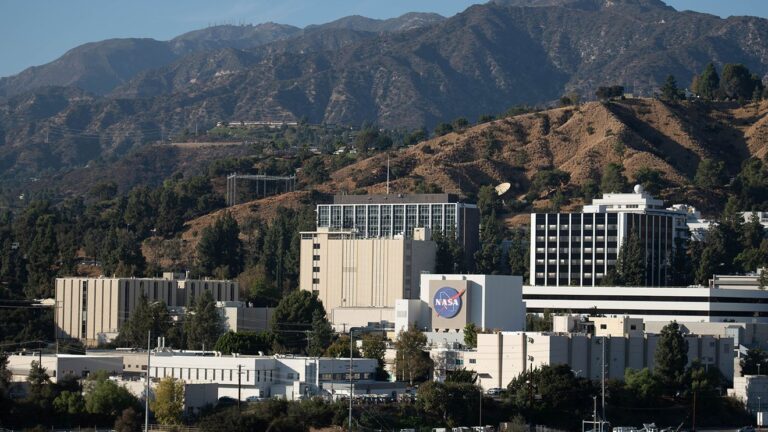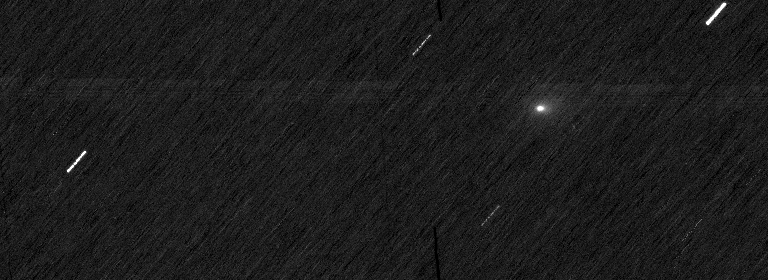Key Takeaways:
Talk about getting up close and personal. The two spiral galaxies that make up the ARP 256 system have just begun a long and chaotic journey together, destined to spend millions of years colliding into each other before finally merging into a galaxy all their own.
The image, captured by NASA/ESA’s Hubble Space Telescope, shows the barred spiral galaxy duo slowly combining in Cetus the Sea Monster, about 350 million light-years from Earth. Their spiral shapes aren’t nearly as pronounced as they used to be, as the gravitational forces responsible for drawing the galaxies together cause them to become stretched and distorted.
Their nuclei are still far apart and won’t being converging any time soon, but the image shows distinct signs that an exciting galactic collision is underway. The galaxy on the upper left boasts prominent tidal tails, filled with dust, gas, and stars, being pulled toward its companion. The vibrantly blue specks scattered throughout the image are stellar nurseries from which hot new stars are consistently emerging. The uptick in star formation is caused by a surge in interstellar dust and gas motion triggered by the strong gravitational interactions.
The pair was named after Halton Arp, who first catalogued ARP 256 in 1966 in the Atlas of Peculiar Galaxies. The catalogue features galaxies at various stages of evolution, including strangely shaped dwarf galaxies, galaxies producing forceful jets, and those interacting, like ARP 256, the Mice galaxies, and the Whirlpool Galaxy. The catalogue serves as a tool for astronomers looking to understand how spiral and elliptical galaxies change shape over time.
Hubble’s Advanced Camera for Surveys (ACS) and the Wide Field Camera 3 (WFC3) captured the image, and with such a distinct galactic convergence underway, it’s pretty much guaranteed that ARP 256 will be closely observed over the course of its exhilarating union by lucky astronomers in the far future.










